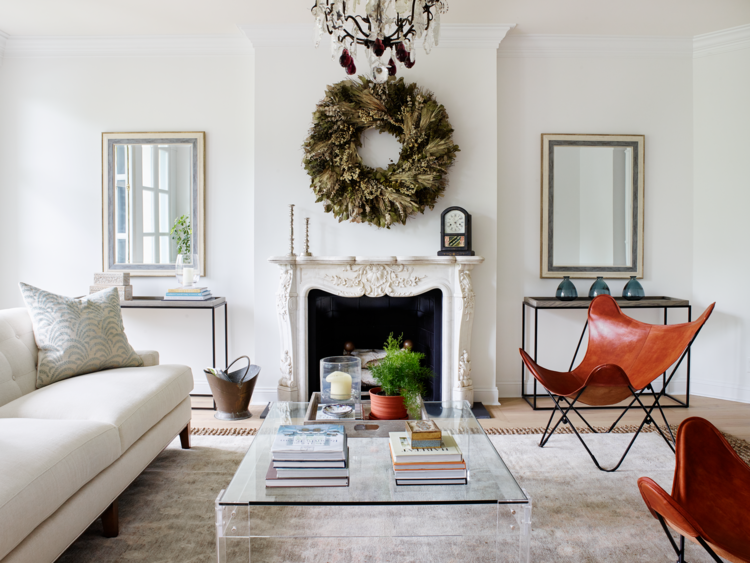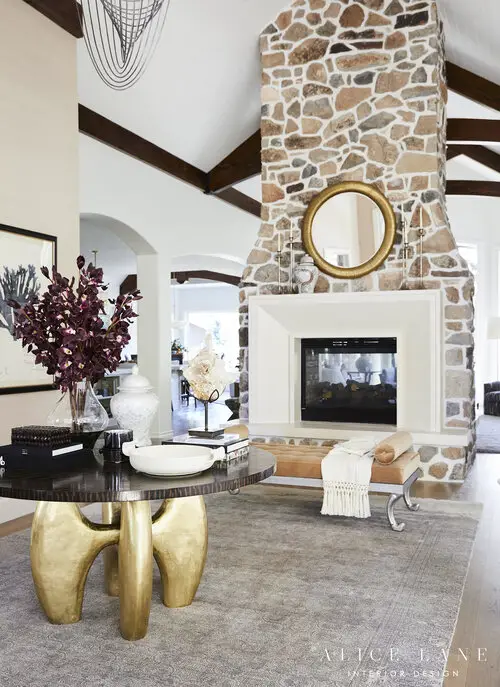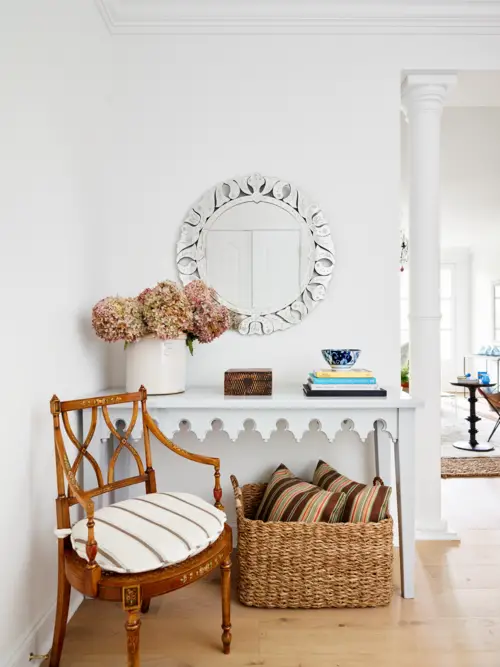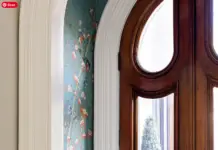The term mid-century modern refers to a style of furniture design and architecture that became prominent within the United States after World War II. When soldiers returned home, there were demands for new housing, and with this new housing came an emphasis on horizontal lines and an open-flow setting. Interest in this style of design dwindled in the 1970s and 1980s but has recently seen a resurgence.
Elements

Though there are many different elements to the mid-century modern design, the two key elements are color and materials.
Materials
In the mid-century modern design style, the materials used within the space are important. Wood is an essential part of mid-century modern design and is one of the primary elements. Different types of wood are used: peak, beech, and oak were the common materials used in mid-century modern furniture and wood paneling and flooring.
During the emergence of the mid-century modern style, there was also a rise in the usage of materials like acrylic, plastic, fiberglass, and foam, which resulted in a mix of organic and synthetic materials within the furniture.
There was also a shift in the use of textiles during this. Fabrics like corduroy, velvet, and fur became popular options for furniture and area rugs.
Colors
The color palette of mid-century modern design is neutral, mostly relying on shades of white, gray, and black. Other colors were used as accents and contrasts against the neutral tones.
Creating a Mid-Century Modern Living Room

If you want to create a mid-century modern living room in your own home, there are ways to do so.
Wood Furniture
When creating a mid-century modern living room, incorporate furniture made of durable hardwoods. There have been many new Innovations with newer materials, like laminates and fiberglass, but wood furniture has proven to be strong and durable. To remain true to the style, you can choose wood pieces that have tapered legs, which was prevalent in sofas and chairs during the time.
Space
In a small living room, you want to create the illusion that there is more space. To do this, you’ll need to invest in the right furniture; furniture was a common option in the mid-century modern era, and the slim legs can help give the illusion of more space in a living room.
Symmetry
Symmetry was important during the era when the style was prevalent. In interior design, symmetry is often used to create balance and calm, and within a mid-century modern living room can help the room feel bigger.
Clean lines and geometric shapes were also important aspects of the mid-century modern style. Within your own home, you can achieve this look by setting up framed images on your walls and symmetrically arranging the furniture in your living room.
Primary Colors

Though mid-century modern design mainly focused on neutral tones and pastel colors, you can use primary colors to create a bright and unique space. The primary colors are red, yellow, and blue, and they are considered primary colors because they cannot be made by combining other colors, but other colors can be made by combining the primary colors.
Primary colors can be added to your living room space by using accessories, like a throw blanket or couch pillow. It works to add color to the room without altering the entire color scheme.
Minimalism
Mid-century modern design has influences from Scandinavian design, which heavily focused on minimalism. In the past, homes in Scandinavian countries were small with very little space, so individuals in those countries could not have extra furniture or trinkets. Though homes are much more spacious now, mid-century modern design retained this element of minimalism.
When decorating your living room in this style, you want to decide which elements in your room are your statement pieces; these are the pieces that you base your colors and decorations around. Statement pieces can be anything; tables, sofas, or chairs. Once you have decided upon your statement piece and have begun rearranging your living room, eliminate any extra clutter. The point of statement pieces is to show off their form, which can be challenging when there are other distractions like cluttered shelves or colorful trinkets.
Lighting

Light is a key element of mid-century modern furniture design, and when the style emerged, architects began designing homes with larger windows and sliding doors to allow for more natural light. The muted colors can make the living room seem quite dark, and if your home is lacking in large windows and sliding doors in your living room, there are ways to bring in light.
Chandeliers are a great way to bring more light to a room while also adhering to the mid-century modern style. Whether you want a chandelier that fits the style or something more modern is up to you. Additionally, standing lamps in the corners of the room are another option.
However you choose to incorporate this style of design into your living room is up to you, but ultimately style the space the way you want.
Thanks to iconbydesign.com for consulting.
























